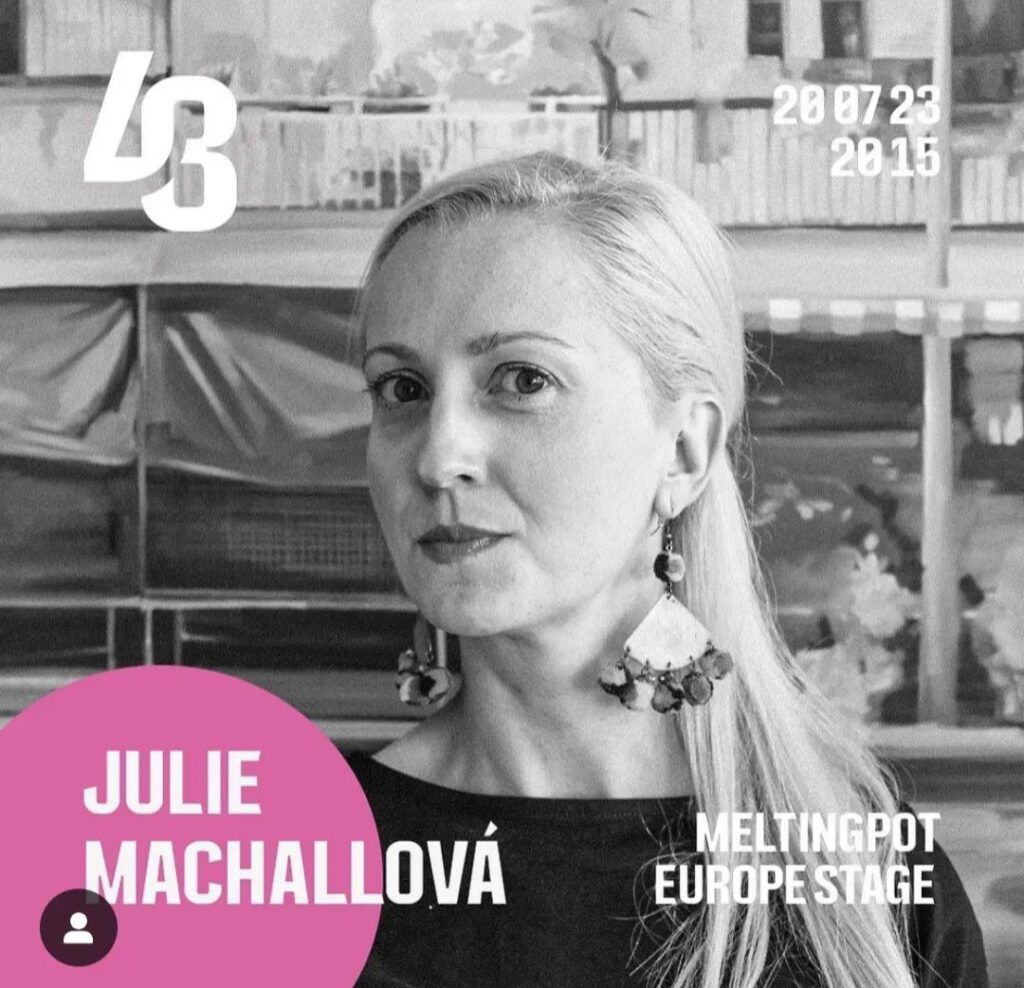About

Julie Machallová
Education
- University of Ostrava, Faculty of Fine Arts, Department of Painting, a painting studio of Prof. Daniel Balabán academic painter
- University of Ostrava, Faculty of Education, Art Education
- Art Highschool Ostrava, Department of Painting
Study Internship
- Escuela de Arte de Sevilla, Spain, Department of Mosaic, Mural techniques and Enamelled Jewelry
In my paintings I work with architecture, nature and figures. The architecture is known as Farnswort House, Villa Tugendhat, Barcelona pavilion. The concept is that architecture was used to house people and today this functionalist architecture is like a museum where visitors go to look at the same as in a gallery for paintings. The functionalist architecture served as, for example, villa Tugendhat was used for ordinary living – housing. As much architecture as Barcelona pavilion, the Farnsworth house had own function.
Now the function of this architecture has been transformed and serves as a museum for visitors. People who visit famous architecture admire the beauty of architecture, it’s like admiring a jewel or artwork in a gallery. Visitors to the famous villas have different attitudes, communicate with each other or are tired and rest on a bench (Barcelona Pavilion).
The famous architecture is like a background to me. Much more important to me is the figure in the painting, who plays a psychological role. The figures are unknown people, we don’t know who they are. It’s important their behaviour (Visitors in Pavilon – resting people at the exhibition, searching for exit.)
I create scenes like in the movie, I work with the narratative. It’s about emotions, dramatic, quit solitude, frozen in time, lonely…
The people depicted inside or in front of the buildings are present and yet seem absent at the same time. They are visitors who bring life to these structures only for the brief duration of their presence. These houses, however, have long since transformed into museums. In this way, Machallová places these iconic buildings into a fascinating context – in a snapshot, a fleeting moment, she attempts to capture the lives these buildings once knew while simultaneously revealing the tension these structures now exude – balancing between private and public space. Architecture here is perceived as an external shell, enclosing something within – but what is it today, and what was it in the past?
In this manner, her works acquire a deeper, entirely personal meaning – both for the artist and for all of us. Julie Machallová creates sensitive, atmospheric paintings that speak of the quiet experience of architecture. She offers us the possibility of a profound journey inward. For the viewer, she reveals a way to creatively expand a story, a feeling, or a presence. Thus, she becomes the author of scenes that can evoke different memories, emotions, and experiences in each of us.
texted by curator Reinhold Weinmann – Kunsthistoriker M.A.
The environment plays an essential role in Julie’s paintings, the scenery in which the figure is set. For the most part, they are made up of monumental scenes that fill the background, and it does not matter whether they are urban or natural landscapes. They encode the feeling of being in humble relation to a transcending entity. Julie likes to stop time in paintings.
Certainly, for Julie Machallova’s painterly thinking, the common theme is one of uncompromising solitude. The visual action actor is burdened by our attention, voyeurically observed, grappling with something serious. But the severity is not demonstrated by a radical dynamic gesture; on the contrary, the figures are mostly calm and static. Julie likes to stop time in paintings.
texted by Jaroslav Michna (art critic and curator and curator Gallery of Fine Art Ostrava)